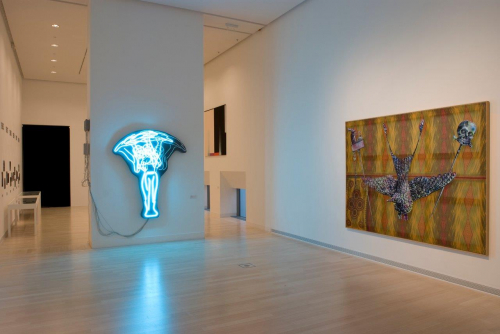Due to its original location, the Statue of Liberty can be considered as the ultimate landmark of the city of Budapest. The sculpture’s relatively brief history alone seems to stand for the mutability of any historical interpretation within changeable political and social circumstances, since originally it was part of a larger ensemble of statues (the Monument of Liberation) to commemorate the Soviet liberation of Hungary from the Nazi occupation. The Statue is also surrounded by an aura of urban legends and has been subject to some critical art projects, too. Ágnes Szabó refers to the sculpture’s “emptiness” in terms of its meaning and referentiality by turning it into a seemingly hollow shape. This formal translation is complemented by an ironic understanding of the statue’s posture: Szabó animates the otherwise static figure by using the rudimentary movements that are allowed by neon lighting, rendering the female form into a puppet. In this way the symbolic function of the female figure is underwritten by a critical approach to its own, historically, politically and culturally charged meaning. (Katalin Timár)


